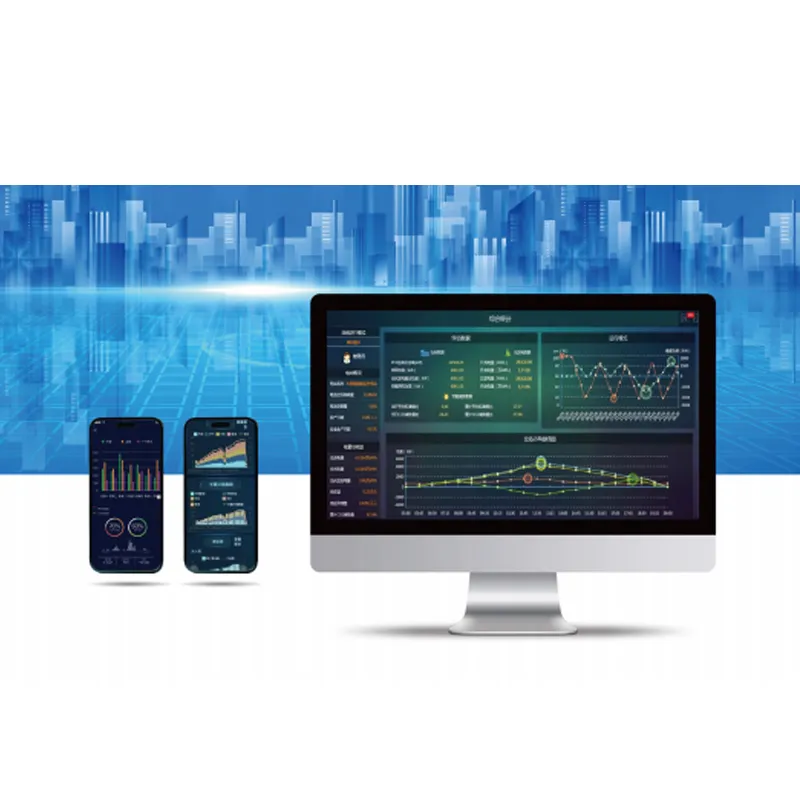
jul . 03, 2025 13:53 Terug naar lijst
Adaptive Energy Control Systems for Weather Variability
The increasing unpredictability of global weather patterns—from extreme heatwaves to unseasonal storms—has underscored the need for resilient energy solutions. Traditional power grids and static energy systems often struggle to adapt to rapid environmental changes, leading to inefficiencies, outages, and heightened costs. Enter adaptive energy control systems, a revolutionary approach to managing energy production, storage, and distribution in real time. By integrating advanced technologies like artificial intelligence (AI), predictive analytics, and modular energy management system battery storage, these systems empower homes, businesses, and communities to thrive amid climatic uncertainty. This article explores how these innovations work, their benefits, and their role in shaping a sustainable future.

The Role of Energy Management Systems in Weather Adaptation
Energy management systems (EMS) are the backbone of modern adaptive energy solutions. These systems monitor, analyze, and optimize energy consumption across residential, commercial, and industrial settings. In the context of weather variability, an EMS uses real-time data—such as temperature fluctuations, humidity levels, and renewable energy generation—to adjust power distribution dynamically. For example, during a heatwave, when cooling demands spike, the system can prioritize energy allocation to HVAC systems while reducing non-essential loads.
A key feature of energiebeheersystemen is their ability to integrate with renewable sources like solar panels and wind turbines. By predicting weather changes, an EMS can preemptively store excess solar energy generated on sunny days for use during cloudy periods or nights. This proactive approach minimizes reliance on fossil fuels and stabilizes energy costs. Additionally, machine learning algorithms enable these systems to “learn” from historical weather patterns, improving their predictive accuracy over time.
For regions prone to storms or snowfall, energiebeheersystemen enhance resilience by automating fail-safes. If a grid outage occurs, the system instantly switches to backup power sources, ensuring uninterrupted operation for critical infrastructure.
Integrating Energy Management System Battery Storage for Reliability
Pairing an energy management system with battery storage is a game-changer for addressing weather-induced energy challenges. Energy management system battery storage solutions act as a buffer, storing surplus energy during periods of low demand or high renewable generation. This stored energy becomes invaluable during extreme weather events, such as hurricanes or prolonged cloudy days, when renewable generation may dip.
Modern battery technologies—like lithium-ion and flow batteries—offer high capacity, fast charging, and long lifecycle performance. When integrated with an EMS, these batteries enable smarter energy allocation. For instance, during a winter storm, the system can draw from stored reserves to power heating systems while reducing grid dependency. This not only cuts costs but also mitigates the risk of blackouts.
Another advantage of energy management system battery storage is its scalability. Homeowners can start with a small setup and expand capacity as needed, while utility providers can deploy large-scale storage farms to stabilize regional grids. In areas with volatile weather, this flexibility ensures that energy supply remains consistent despite unpredictable generation from renewables.
How Energy Control Systems Enable Precision in Power Distribution
While energiebeheersystemen focus on optimization, energy control systems (ECS) take a more granular approach. These systems use sensors, IoT devices, and AI-driven algorithms to manage energy flow at the circuit level. For example, in a commercial building, an ECS can dim lights in unoccupied rooms, adjust thermostat settings based on occupancy sensors, and prioritize power to essential machinery during a heatwave.
The real strength of energy control systems lies in their responsiveness. By processing live data from weather forecasts, grid conditions, and user behavior, they make split-second decisions to balance supply and demand. In regions with frequent weather shifts, this precision reduces energy waste and lowers carbon footprints.
A standout application of energy control systems is their integration with decentralized microgrids. During a hurricane, a community microgrid powered by solar panels and battery storage can operate independently from the main grid. The ECS ensures that energy is rationed efficiently, prioritizing hospitals, communication networks, and emergency services.
FAQs About Adaptive Energy Control Systems
How Does an Energiebeheersysteem Improve Efficiency During Weather Changes?
An energy management system leverages real-time data and predictive analytics to anticipate weather-related energy demands. For example, if a cold front is approaching, the EMS pre-charges batteries using excess solar energy to prepare for increased heating needs. This reduces reliance on the grid during peak hours, lowering costs and enhancing reliability.
What Are the Benefits of Combining Energy Management System Battery Storage with Renewables?
Energy management system battery storage ensures that renewable energy isn’t wasted when generation exceeds demand. Stored power can be used during cloudy days, calm winds, or grid outages, creating a self-sufficient energy ecosystem. This combination also shields users from fluctuating energy prices and reduces carbon emissions.
How Do Energy Control Systems Handle Sudden Weather Variability?
Energy control systems use AI to adapt instantly to weather shifts. If a storm disrupts solar generation, the system automatically switches to battery reserves or adjusts consumption patterns to match available supply. This agility prevents downtime and maintains optimal performance.
Can Energy Management Systems En Energy Control Systems Reduce Energy Costs in Unpredictable Climates?
Absolutely. By optimizing energy use and storage, energiebeheersystemen En energy control systems minimize waste and peak-demand charges. Users in volatile climates often see a 20–40% reduction in energy bills, alongside longer equipment lifespans due to reduced strain.
Why Invest in an Integrated Energy Control System Solution?
Integrated systems offer end-to-end resilience. They unify generation, storage, and consumption under a single platform, providing unmatched adaptability to weather changes. For homeowners and businesses alike, this translates to lower costs, higher efficiency, and peace of mind during extreme events.
As climate change intensifies, the ability to adapt energy strategies to weather variability will define sustainability and economic stability. Energy management systems, energy management system battery storage, and energy control systems collectively offer a robust framework for navigating this new reality. By embracing these technologies, consumers and communities can future-proof their energy infrastructure, reduce environmental impact, and achieve long-term savings. The path to resilience begins with intelligent, adaptive energy solutions.
-
Smart Grid Management for Rural Electrification
NieuwsJul.03,2025
-
Energy Management System Battery Storage for Renewable Integration
NieuwsJul.03,2025
-
Energy Control Systems in Public Transportation Networks
NieuwsJul.03,2025
-
Electrical Energy Management System for Electric Vehicle Charging
NieuwsJul.03,2025
-
BMS Energy Retrofitting for Aging Infrastructure
NieuwsJul.03,2025
-
Adaptive Energy Control Systems for Weather Variability
NieuwsJul.03,2025























